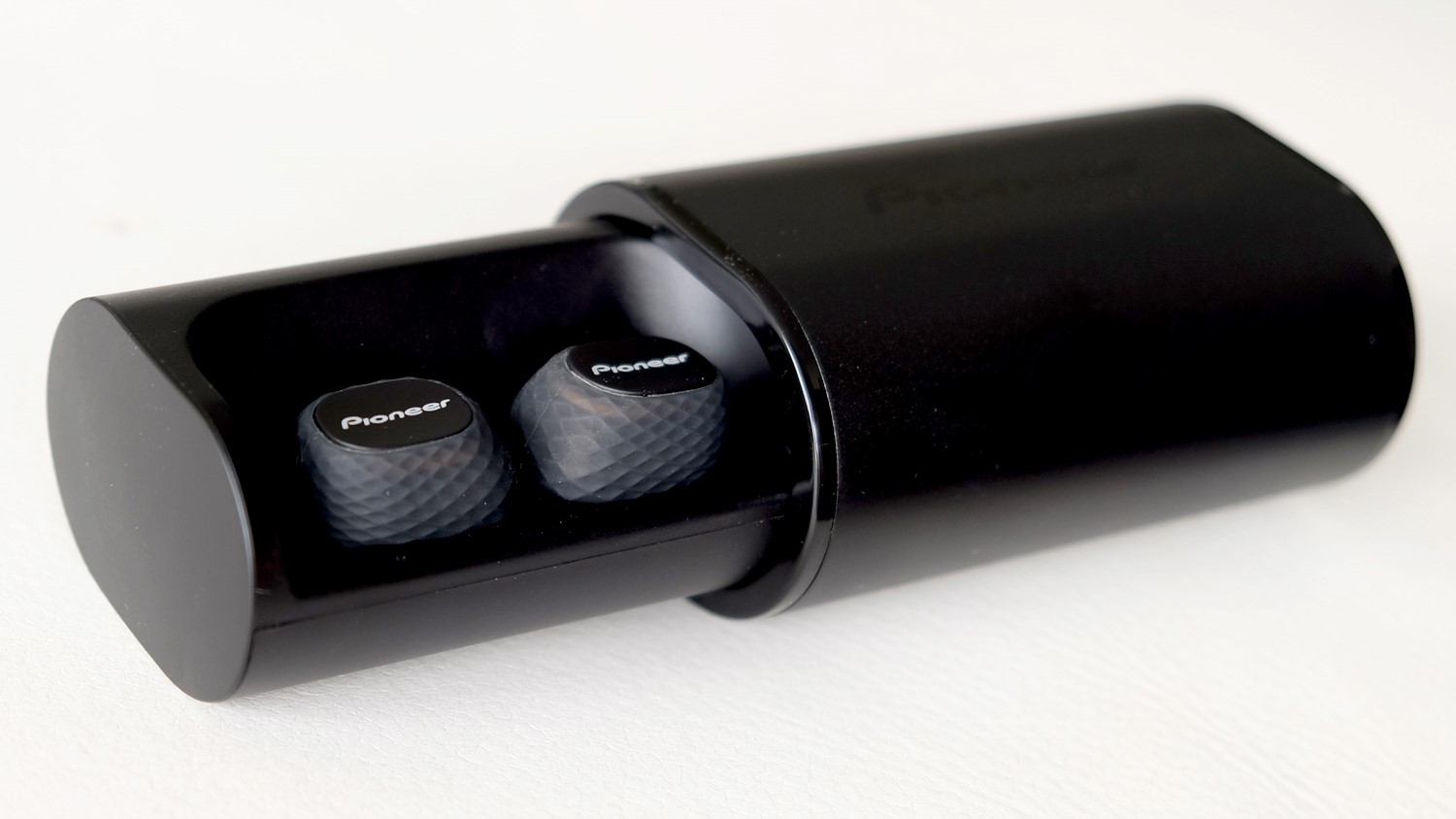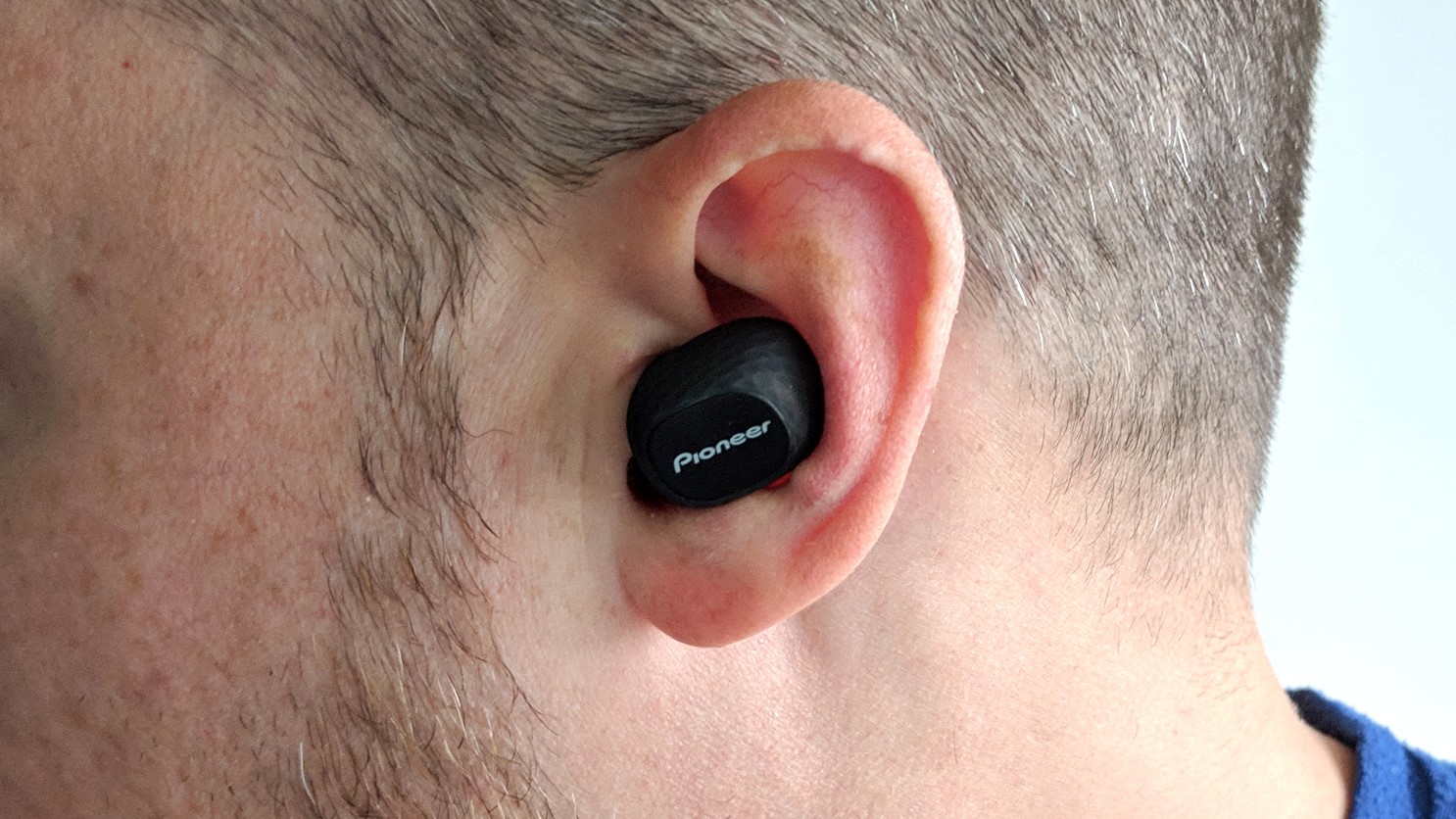TechRadar Verdict
Pioneer tries to offer a more affordable alternative in going “truly wireless,” but the end result just isn’t worth the cost of entry.
Pros
- +
Comfortable fit
- +
Reduced price
Cons
- -
Not loud enough
- -
No aptX support
- -
Better options for the price
Why you can trust TechRadar
Look around and it’s not hard to find a pair of true wireless earbuds. They’re even out in the wild in increasing numbers, with Apple’s AirPods being the most visible.
Similar to what's already out there, Pioneer’s C8 are “truly wireless” earbuds that look to present a better and cheaper alternative. Unfortunately, however, Pioneer didn’t veer all the way down to the bottom of the pricing ladder, opting to stay in the mid-range.
At $120 (£149, AU$$229), the Pioneer C8 are affordable without feeling overly pricey, but the problem is that the cost-cutting hurt the C8 in one of the most important areas: volume level.
While admirable design efforts and simplified execution are always nice, if headphones don’t sound good or loud enough, it’s hard to justify dishing out that much in a competitive field, and that's what happened here.
Design
Pioneer has a reputation for making products that look nice and sound great. The company’s pedigree has transcended everything from home entertainment to the automotive aftermarket, and even in the inner audio circles, the name carries clout.
That said, while headphones aren’t new to these guys, true wireless earbuds are. And that might explain a few things.
Thankfully, regardless of how they sound, the C8 are tastefully designed, even if they lack a wow factor, visually speaking. Each earpiece has a textured rubber body for good grip and a softer feel when nestled into the ear. They’re also lightweight and easy to put on or take off. Build quality is okay, if not uninspiring, but we don’t mind that so much if performance is up to snuff.
Pioneer went with a wider hole for the center of the ear tips to fit the protruding speaker. They can be a bit tough to swap out for one of the other sizes (there are large, medium and small size tips included). Normally, we wouldn’t note that except it means that third-party tips will be harder to use, unless you get Comply Foam tips that have a bigger hole and can stay in place.

A more obvious feature that separates the C8 from the competition is the charging case, which is bigger than many other true wireless earbuds on the market.
While we appreciated that Pioneer used USB-C for the charging port, we’re not sure why going this big didn’t come with a bigger battery inside. The case’s internal battery can fully recharge the earbuds twice before it needs a recharge of its own. We would’ve liked to see an extra charge or two for carrying this thing around. It can manage in a jacket pocket, but looks really awkward in a pant pocket.
The case has two magnetic cradles to charge the earbuds. Thankfully, the cradles are recessed enough to fit them, regardless of what size tips you use. We just needed to make sure the red charging lights went on for both before sliding the case closed.
There’s no sweat or water-resistance here, so that’s something to consider before taking them to the gym or out on a run as Pioneer’s warranty doesn’t cover sweat-induced damage.
As we noted, there are three pairs of ear tips, along with a USB-C charging cable and quick start guide, but no other goodies beyond that.

Connectivity
As you'd expect, Bluetooth pairing was relatively easy: Once we took the buds out of the case, they were automatically placed into pairing mode. Re-pairing after that wouldn’t be that much of a difference.
Putting the buds back in the case cut off audio playback and severed the connection - however, they don’t automatically turn on and pair when removing them from the case. We had to hold the buttons on both earbuds to manually power them on.
A built-in voice prompt notes that left and right channels are active and connected, and when the paired device is ready to go. On iOS, the battery indicator shows how much juice is left when swiping down for Control Center.
The left earbud is the more important of the two because it seems to maintain the connection with the phone ... but its stability was questionable as dropouts seemed to randomly occur as we moved the phone from one pocket to the other or took it from a table and pocketed it. We would’ve liked to see a stronger link throughout, especially at this price point.
We did okay with phone calls, but weren’t impressed, either. Callers knew right away that we were using a headset because of the ambient sound leaking through, and had to crank up the volume to hear them. We can’t dock Pioneer too much on this, as results few headphone manufacturers have yet to crack the code when comes to calling.
For iOS users, AAC codec support means you get the best Bluetooth audio stream optimized for those devices but that’s not the case for Android, where aptX support is missing. Non-iOS users have to settle for the SBC (Subband Codec), which isn’t as good as aptX, and is one of the reasons that we can’t recommend these for dedicated Android users.

Performance
The C8’s comfy fit was fine, but we had to do battle with the volume levels to let the music come through and fill our ears. We routinely had to push them all the way to full when out in public spaces, like transit or on the street.
Once they were in place, passive noise isolation is decent - and your results may vary, depending on the shape of your ears - but we were left wanting.
Pioneer equipped the C8 with 6mm drivers, which should be reasonably loud in their own right, but we only ever lowered the volume in quiet confines. We tried all three tip sizes to see if our ears were deceiving us, but we had the most success with the large size. The other two didn’t create enough isolation, forcing too much ambient noise to bleed in.
It’s also evident these weren’t built to push the envelope in the audio spectrum. The neutral soundstage isn’t necessarily a bad thing — we get that it works in good ways. It’s just that we kept fiddling with the fit to tighten the seal, and thereby try pulling out more bass. The lack of punch in the 6mm drivers shows in these instances. The mids and highs aren’t especially powerful or warm, leaving us wanting more of everything.
If you’re a fan of genres that aren’t bass-heavy, you may get better results. Rock, jazz and orchestral instrumentals might come off alright, whereas hip hop and electronica tracks fall a little flat. We could never shake the feeling that we were ‘further away’ from the music, if that makes any sense. Raising the volume was a way to not just make tunes louder, but to also feel the music at the same time. That’s a basic expectation with any pair of headphones.
That battle made the C8 difficult to like in noisier environments. Whether it was a subway train or in the gym, we had to go full blast to drown everything out. Full volume on these earbuds wasn’t the same as others we’ve tested, where approaching such a high level wasn’t necessary.

Battery life
The constant elevated volume levels taxed the battery heavily. Pioneer rated the C8 at three hours per charge, but the real number was two or less in our testing. Volume is the make-or-break for battery life in true wireless earbuds, and that’s where their true mettle is revealed.
Since we were always hovering in the 80-100 percent volume range, hitting two hours was on a good day. We usually clocked just under that, which is really low at this stage of the game for true wireless earbuds.
Final verdict
Said simply, there are better true wireless earbuds than the Pioneer C8. Admirable design efforts and lower prices are always nice, but if headphones don’t sound good or loud enough, it’s hard to justify dishing out $120 (£149, AU$$229).
Pioneer has had a knack for high-caliber audio, and while these aren’t an indictment on the company’s penchant for quality, they are nonetheless disappointing. Need an alternative? The LiteXim Aerobuds are a good example of getting more for less.
- These are the best true wireless earbuds on the market
Ted Kritsonis is the Freelance Tech Journalist. He is a Tech journalist contributing to a dozen publications: Globe and Mail, MobileSyrup, Futurithmic, Android Central, TechRadar, and WhatsYourTech.ca, among others.

